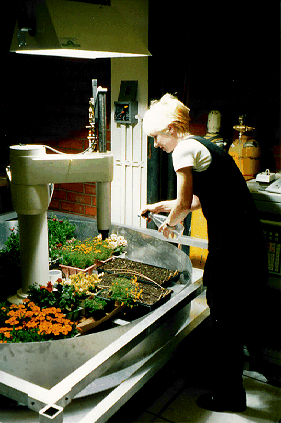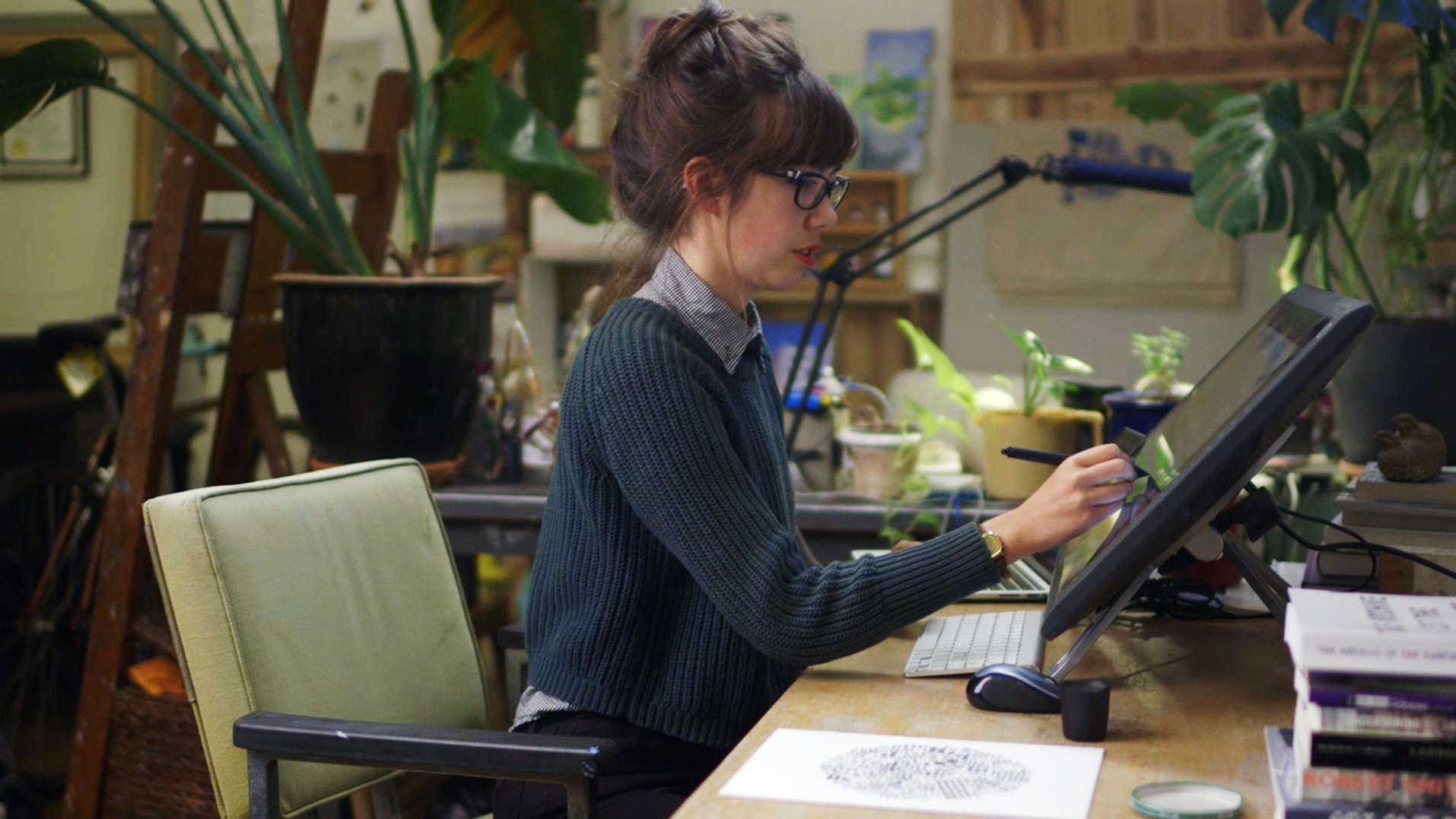On how to grow an idea
Prelude
Jenny Odell is an Oakland-based writer, visual artist, and involuntary birdwatcher whose work often involves the rewards of close observation. In 2015, she was an artist in residence at Recology SF (the San Francisco dump), where she created the Bureau of Suspended Objects, an obsessively-researched archive of 200 discarded objects. She teaches internet art at Stanford, is an artist in residence at the San Francisco Planning Department, and is currently working on a book called How to Do Nothing (forthcoming from Melville House).
Conversation
On how to grow an idea
For TCI x Are.na's Library of Practical and Conceptual Resources, visual artist Jenny Odell muses over the concept of slow growth.
As told to Jenny Odell, 1298 words.
In the 1970s, a Japanese farmer discovered a better way to do something—by not doing it. In the introduction to Masasobu Fukuoka’s One-Straw Revolution, Frances Moore Lappé describes the farmer’s moment of inspiration:
The basic idea came to him one day as he happened to pass an old field which had been left unused and unplowed for many years. There he saw a tangle of grasses and weeds. From that time on, he stopped flooding his field in order to grow rice. He stopped sowing rice seed in the spring and, instead, put the seed out in the autumn, sowing it directly onto the surface of the field when it would naturally have fallen to the ground… Once he has seen to it that conditions have been tilted in favor of his crops, Mr. Fukuoka interferes as little as possible with the plant and animal communities in his fields.
Fukuoka’s practice, which he perfected over many years, eventually became known as “do nothing farming.” Not that it was easy: the do-nothing farmer needed to be more attentive and sensitive to the land and seasons than a regular farmer. After all, Fukuoka’s ingenious method was hard-won after decades of his own close observations of weather patterns, insects, birds, trees, soil, and the interrelationships among all of these.
In One Straw Revolution, Fukuoka is rightly proud of what he has perfected. Do-nothing farming not only required less labor, no machines, and no fertilizer—it also enriched the soil year by year, while most farms depleted their soil. Despite the skepticism of others, Fukuoka’s farm yielded a harvest equal to or greater than that of other farms. “It seems unlikely that there could be a simpler way of raising grain,” he wrote. “The proof is ripening right before your eyes.”
One of Fukuoka’s insights was that there is a natural intelligence at work in existing ecosystems, and therefore the most intelligent way to farm was to interfere as little as possible. This obviously requires a reworking not only of what we consider farming, but maybe even what we consider progress.
The path I have followed, this natural way of farming, which strikes most people as strange, was first interpreted as a reaction against the advance and reckless development of science. But all I have been doing, farming out here in the country, is trying to show that humanity knows nothing. Because the world is moving with such furious energy in the opposite direction, it may appear that I have fallen behind the times, but I firmly believe that the path I have been following is the most sensible one.
The One Straw Revolution by Masanobu Fukuoka

In my view, Fukuoka was an inventor. Typically we associate invention and progress with the addition or development of new technology. So what happens when moving forward actually means taking something away, or moving in a direction that appears (to us) to be backward? Fukuoka wrote: “This method completely contradicts modern agricultural techniques. It throws scientific knowledge and traditional farming know-how right out the window.”
This practice of fitting oneself into the greater ecological scheme of things is almost comically opposite to the stories in John McPhee’s Control of Nature. There, we find near-Shakespearean tales of folly in which man tries and fails to master the sublime powers of his environment (e.g. the decades-long attempt to keep the Mississippi river from changing course).
Any artist or writer might find this contrast familiar. Why is it that when we sit down and try to force an idea, nothing comes—or, if we succeed in forcing it, it feels stale and contrived? Why do the best ideas appear uninvited and at the strangest times, darting out at us like an impish squirrel from a shrub?
The key, in my opinion, has to do with what you think it is that’s doing the producing, and where. It’s easy for me to say that “I” produce ideas. But when I’ve finished something, it’s often hard for me to say how it happened—where it started, what route it took, and why it ended where it did. Something similar is happening on a do-nothing farm, where transitive verbs seem inadequate. It doesn’t sound quite right to say that Fukuoka “farmed the land”—it’s more like he collaborated with the land, and through his collaboration, created the conditions for certain types of growth.
A great number, if not the majority, of these things have been described, inventoried, photographed, talked about, or registered. My intention in the pages that follow was to describe the rest instead: that which is generally not taken note of, that which is not noticed, that which has no importance: what happens when nothing happens other than the weather, people, cars, and clouds.
Attempt at Exhausting a Place in Paris by George Perec

I’ve known for my entire adult that going for a walk is how I can think most easily. Walking is not simply moving your thinking mind (some imagined insular thing) outside. The process of walking is thinking. In fact, in his book Spell of the Sensuous: Perception and Language in a More-than-Human World, David Abram proposes that it is not we who are thinking, but rather the environment that is thinking through us. Intelligence and thought are things to be found both in and around the self. “Each place is a unique state of mind,” Abram writes. “And the many owners that constitute and dwell within that locale—the spiders and the tree frogs no less than the human—all participate in, and partake of, the particular mind of the place.”
This is not as hand-wavy as it sounds. Studies in cognitive science have suggested that we do not encounter the environment as a static thing, nor are we static ourselves. As Francisco Varela, Evan Thompson, and Eleanor Rosch put it in The Embodied Mind (a study of cognitive science alongside Buddhist principles): “Cognition is not the representation of a pre-given world by a pre-given mind but is rather the enactment of a world and a mind… “ (emphasis mine). Throughout the book, the authors build a model of cognition in which mind and environment are not separate, but rather co-produced from the very point at which they meet.

“The Telegarden is an art installation that allows web users to view and interact with a remote garden filled with living plants. Members can plant, water, and monitor the progress of seedlings via the tender movements of an industrial robot arm.”

Ideas are not products, as much as corporations would like them to be. Ideas are intersections between ourselves and something else, whether that’s a book, a conversation with a friend, or the subtle suggestion of a tree. Ideas can literally arise out of clouds (if we are looking at them). That is to say: ideas, like consciousness itself, are emergent properties, and thinking might be more participation than it is production. If we can accept this view of the mind with humility and awe, we might be amazed at what will grow there.
To accompany this essay, I’ve created a channel on Are.na called “How to grow an idea.” There you’ll find some seeds for thought, scattered amongst other growths: slime molds, twining vines, internet gardens, and starling murmurations. The interview with John Cage, where he sits by an open window and rejoices in unwritten music, might remind you a bit of Fukuoka, as might Scott Polach’s piece in which an audience applauds the sunset. The channel starts with a reminder to breathe, and ends with an invitation to take a nap. Hopefully, somewhere in between, you might encounter something new.
- Name
- Jenny Odell
- Vocation
- Visual Artist, Writer

Some Things
Pagination




